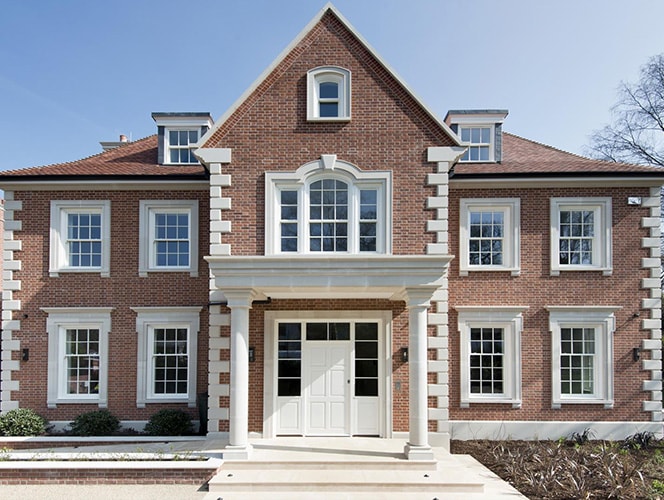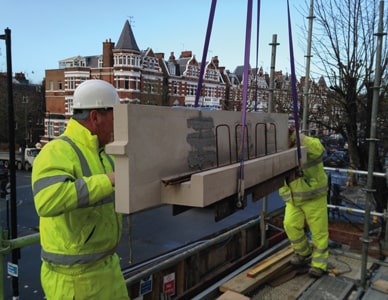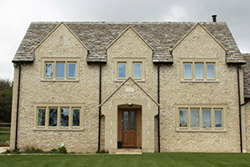Can cast stone be used alongside quarried stone?
Cast stone is popular for new-builds as well as renovations, conversions and extensions to period properties. However, architects and specifiers are sometimes unclear about whether cast stone can be used alongside quarried stone. The answer is a resounding ‘yes’ – as can be seen in the photograph here – but read on to find out more.
For new-build projects, cast stone is commonly used with quarried stone as shown here. This property has been constructed with Cotswold stone random coursed walling, and all dressings are Procter Cast Stone’s manufactured products with a millstone grit coloured finish. Using cast stone in this way results in substantial cost savings, plus much quicker deliveries. Cast stone is more cost-effective than quarried stone even when one-offs are required, but the manufacturing process – using reusable moulds – means that cost savings are greater for products such as door and window surrounds, quoins, string course, copings and numerous others where multiple units are required.
Cast stone weathers in the same way as quarried stone, so architects and specifiers can be confident that both materials will ‘mellow’ together. To the untrained eye, cast stone is indistinguishable from dressed quarried stone, and it will also last as long. Procter’s experience shows that cast stone can be used very successfully on listed buildings as well as those in Conservation Areas.
When cast stone is used on period properties, it is often necessary to reproduce components that are damaged or missing, and also manufacture replica units for additional windows and doors, for example. By a combination of meticulous site surveys and attention to detail during mouldmaking and production, bespoke units can be produced that are first-class copies of the original units. Furthermore, if standard colours are not sufficiently close, Procter Cast Stone can formulate custom colours that will weather to match the original quarried and dressed units. In some cases Procter Cast Stone takes mouldings from original carved units so that an ‘inverse’ pattern can be created on the surface of the mould, thereby allowing special finishes to be reproduced on the faces of the cast stone units. In other cases, Procter Cast Stone works with the architect to produce new cast stone units in a style that matches that of the original dressed stone units.
Whatever the project, Procter Cast Stone allocates a project manager to work closely with the architect, specifier and contractor to ensure all requirements are met in full, including arranging deliveries to suit the build schedule. Highly skilled joiners translate the component designs into the moulds that are critical for the production of high-quality cast stone. During the moulding and when the units are demoulded, great care is taken so that the finished units are of the highest standard possible. All units are manufactured in the company’s own factory with state-of-the-art batching and curing. Procter Cast Stone manufactures units in accordance with the UKCSA Specification for Cast Stone, which far exceeds the requirements laid down in the relevant British Standard, BS 1217:2008.
For more information about high-quality standard and bespoke cast stone products go to proctercaststone.co.uk. Alternatively, contact Procter Cast Stone to discuss specific projects by means of the online chat facility on the website, email info@proctercaststone.co.uk or telephone us.




